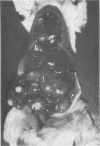Abstract
A laboratory infection of Yersinia enterocolitica in mice which closely resembles the naturally acquired human infection is described Intravenous inoculation of mice with small numbers of Y. enterocolitica gives rise to a systemic, pyogenic infection involving primarily the spleen, liver, and lungs. Massive neutrophil infiltration of these organs occurs early in the infection, eventually leading to large abscesses and pulmonary consolidation. Mice infected intragastrically show neutophil infiltration in the Peyer's patches of the distal ileum less than 24h postinfection. The Peyer's patches are unable to contain the infection which spreads to the mesenteric lymph node, causing large abscesses in the medullary regions. Soon after, the infection becomes systemic with abscesses forming in the liver, spleen, and lungs, and the total peripheral leukocyte count rises dramatically to over 30,000/mm2. A serological response, in the form of agglutinating antibody, begins to appear 2 weeks after infection. Possible causes of death and the usefulness of this infectious disease model are discussed.
Full text
PDF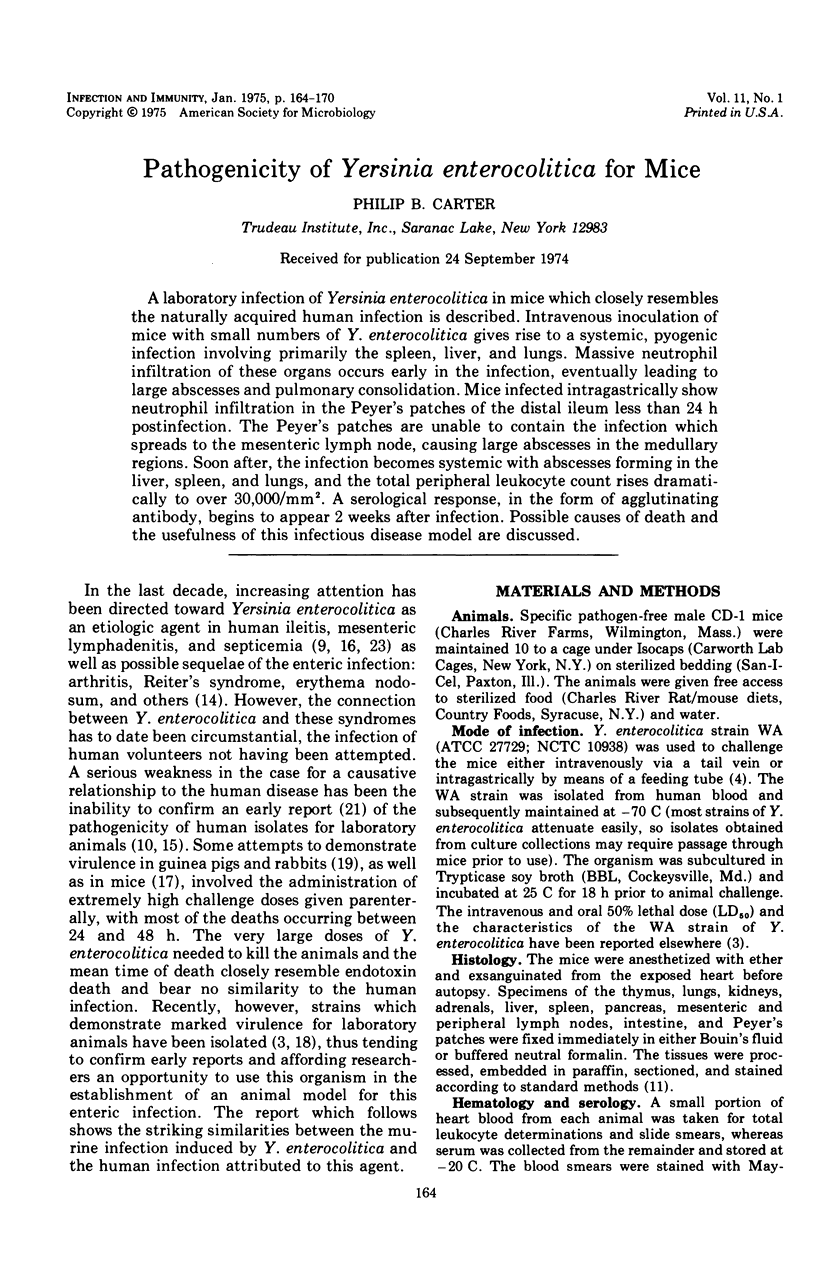
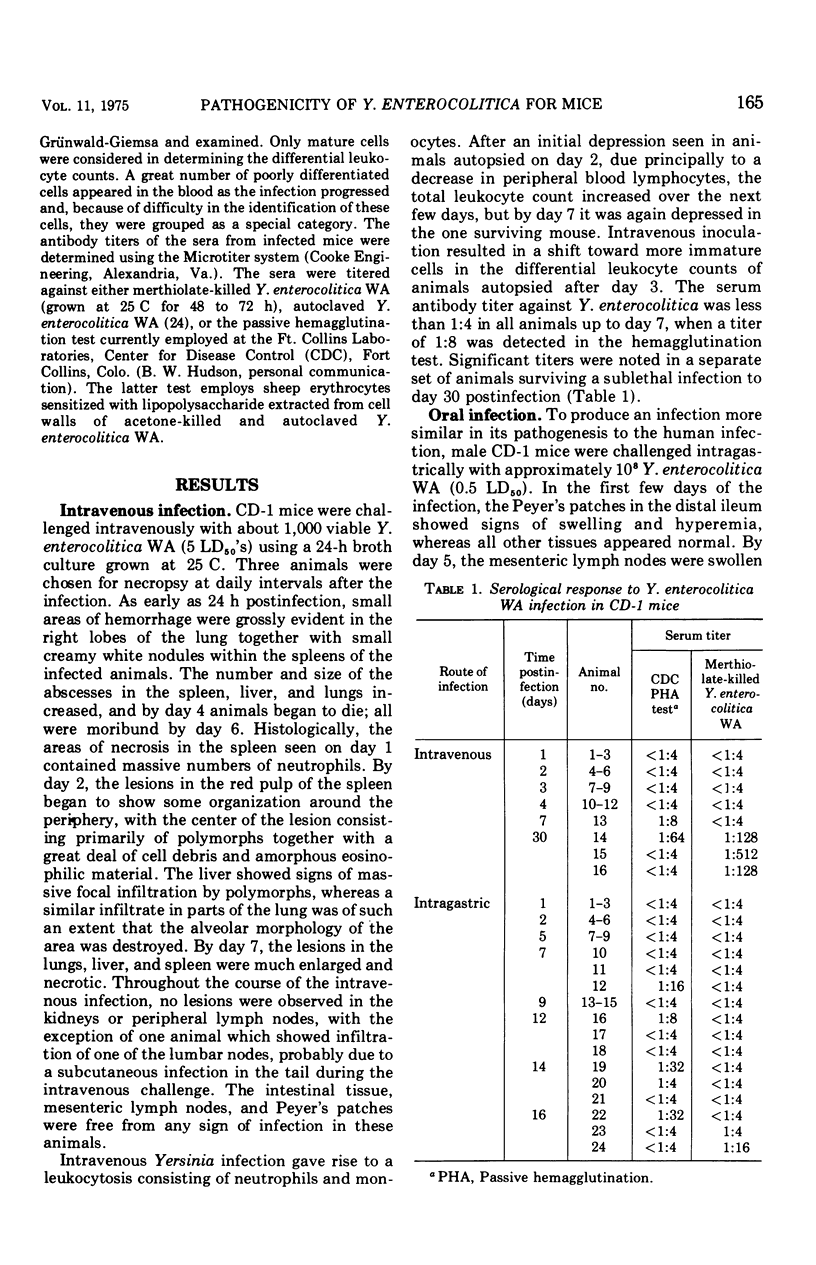
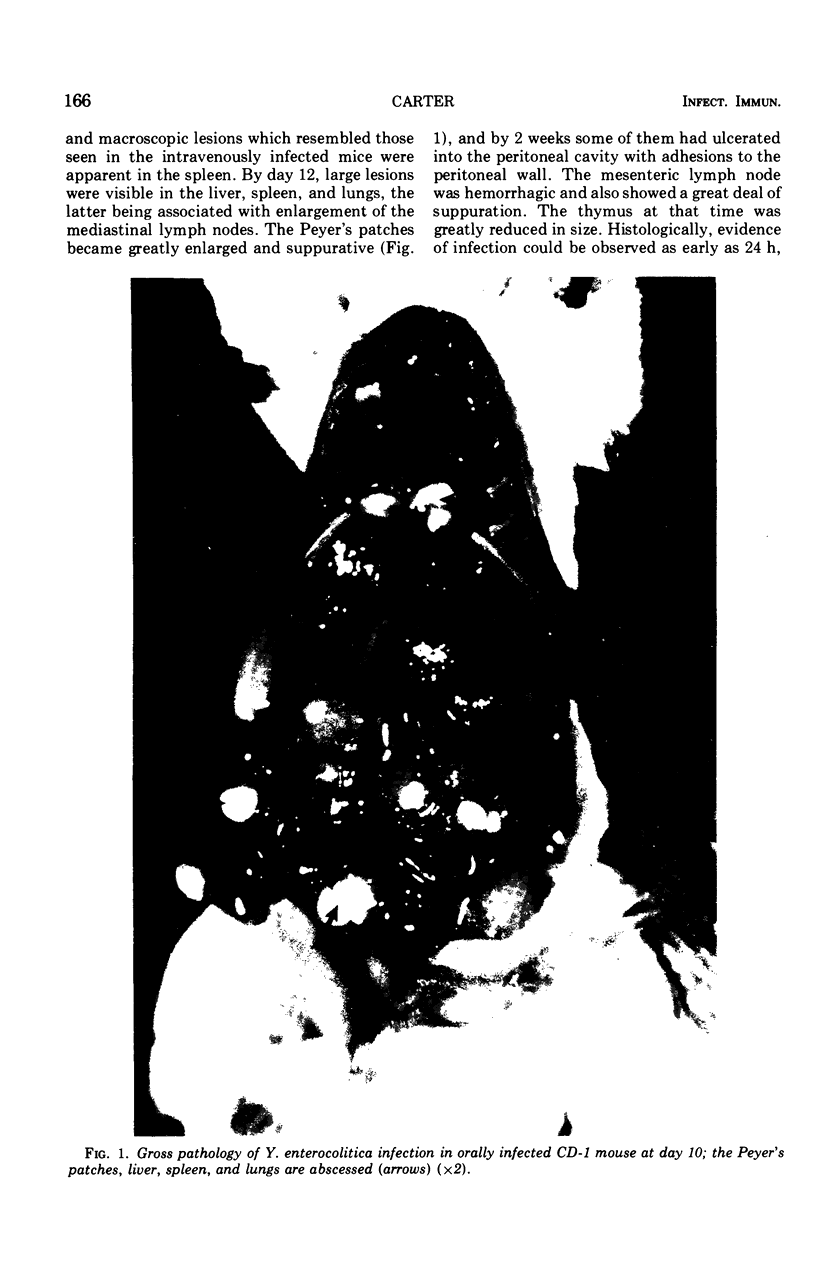
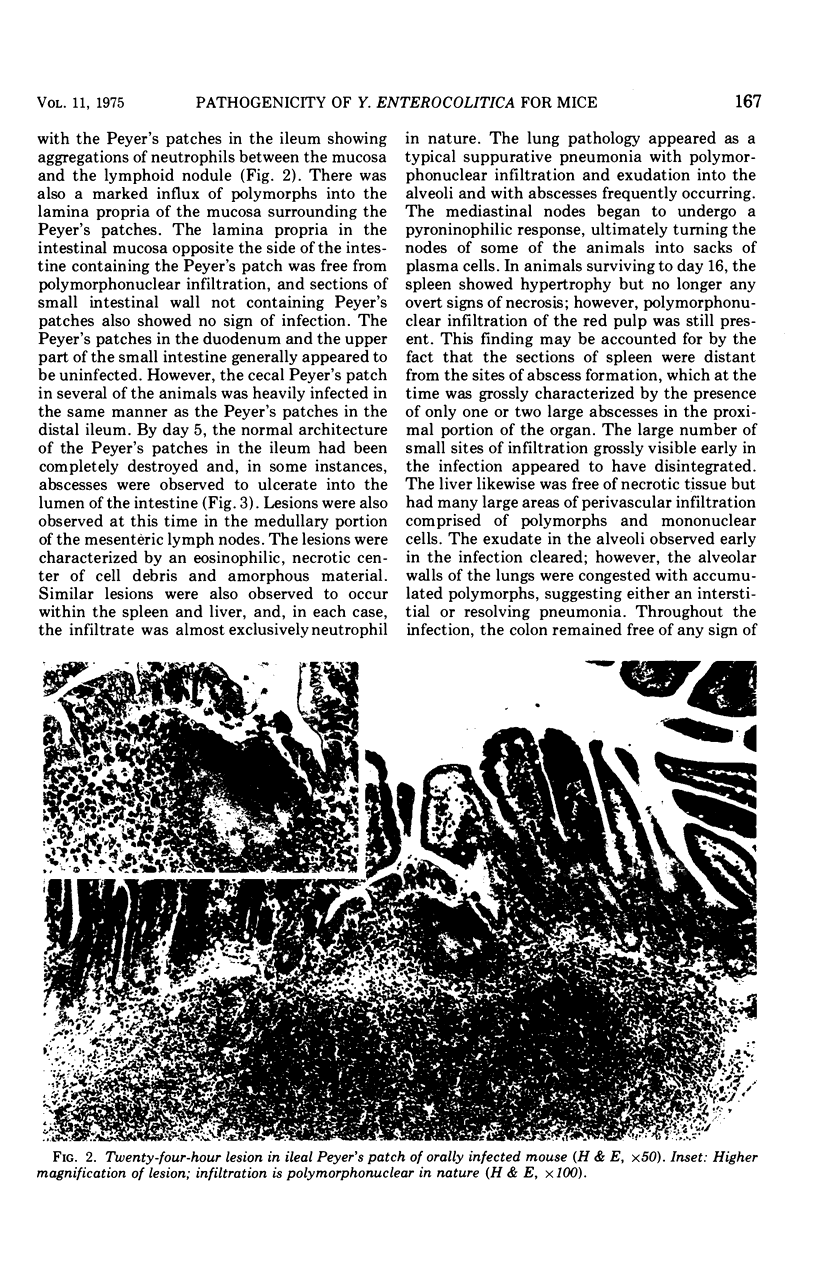
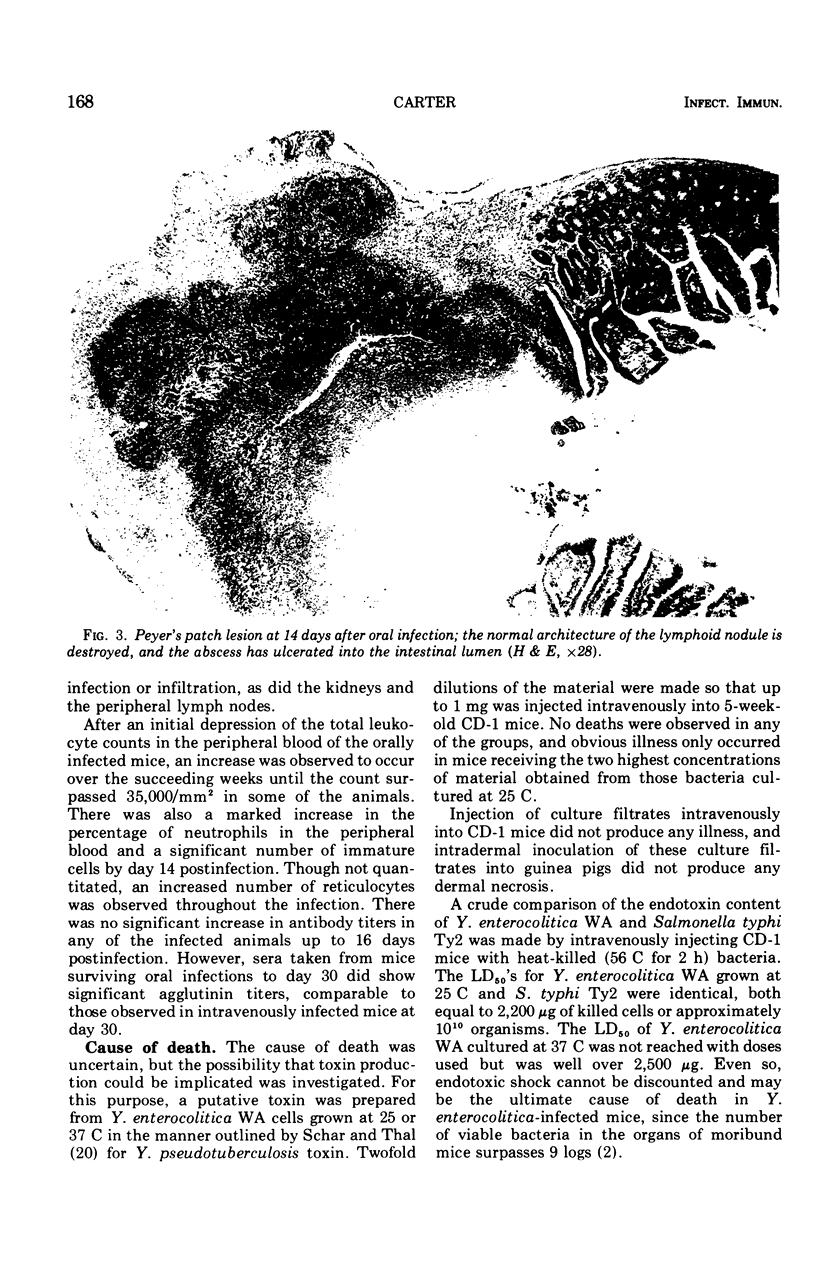
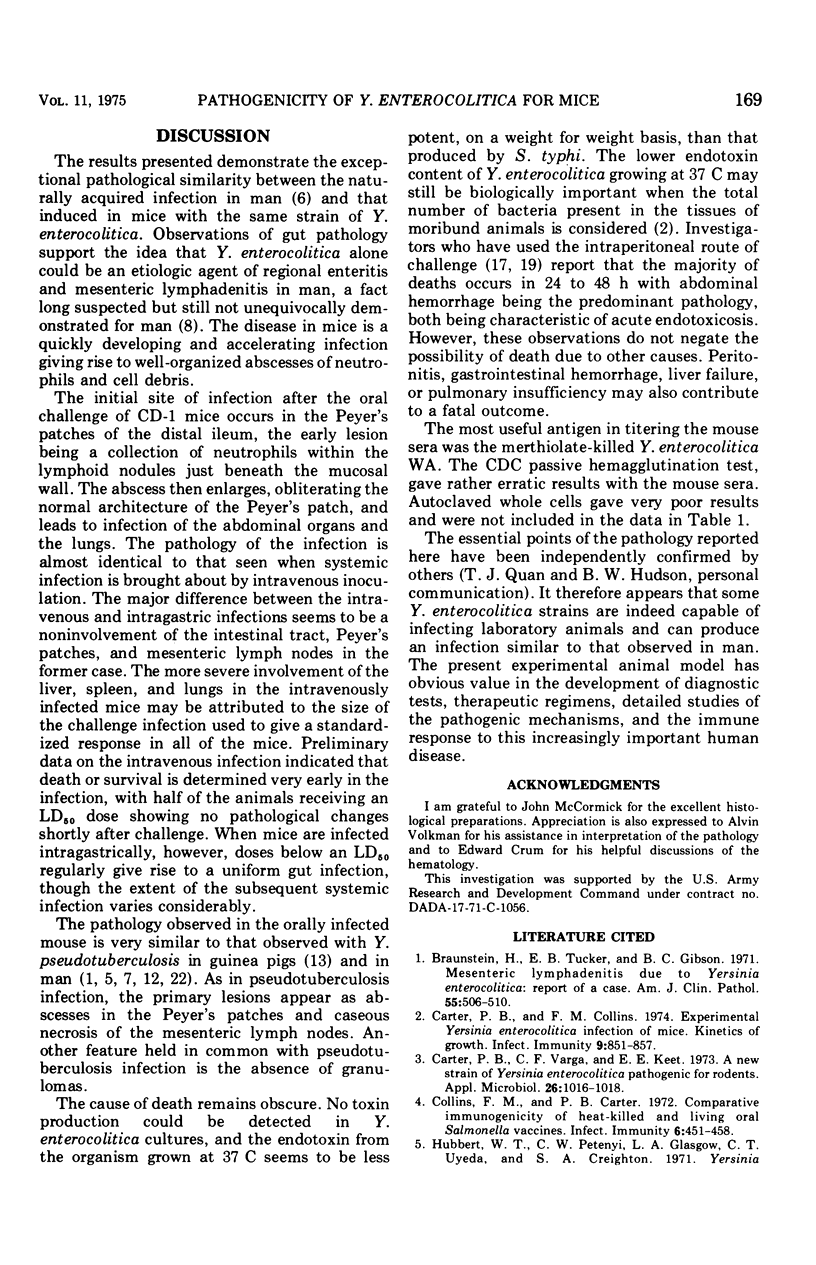
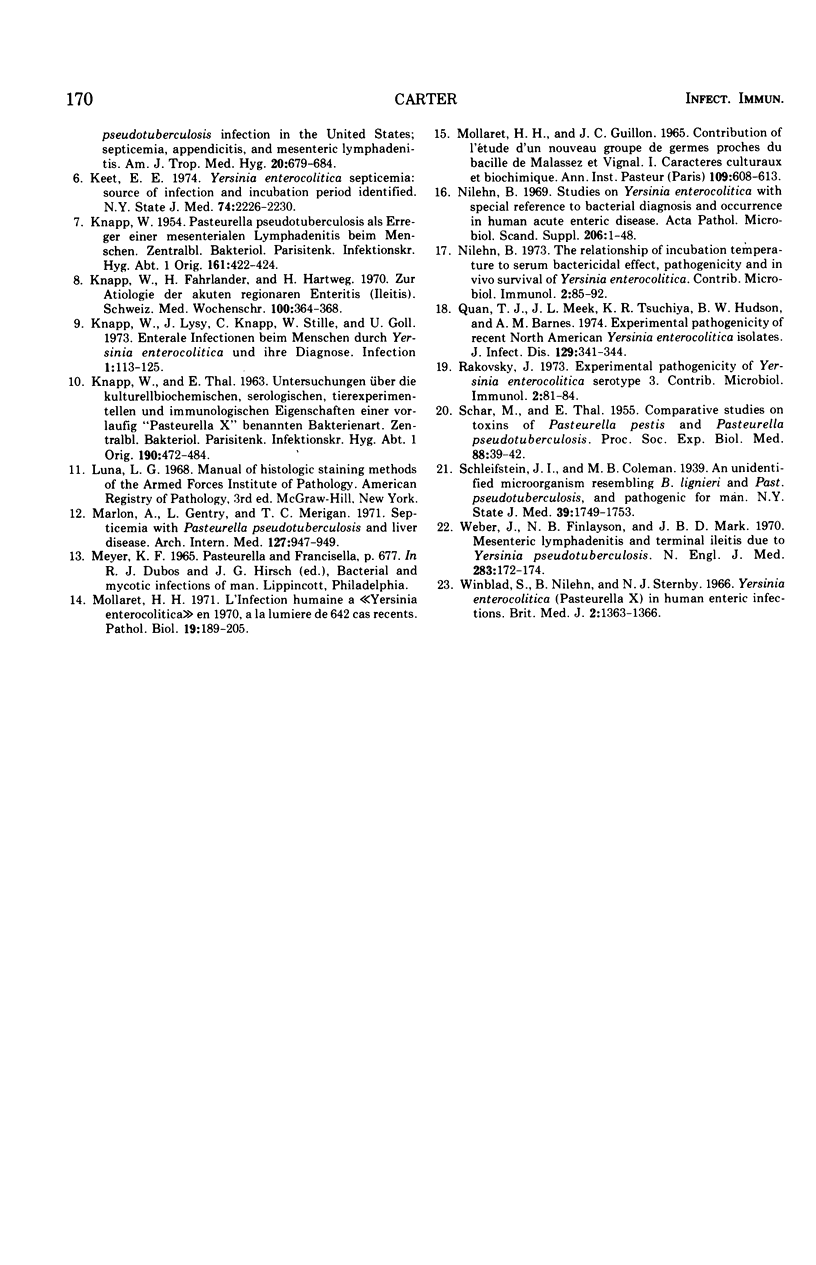
Images in this article
Selected References
These references are in PubMed. This may not be the complete list of references from this article.
- Braunstein H., Tucker E. B., Gibson B. C. Mesenteric lymphadenitis due to Yersinia enterocolitica: report of a case. Am J Clin Pathol. 1971 Apr;55(4):506–510. doi: 10.1093/ajcp/55.4.506. [DOI] [PubMed] [Google Scholar]
- Carter P. B., Collins F. M. Experimental Yersinia enterocolitica infection in mice: kinetics of growth. Infect Immun. 1974 May;9(5):851–857. doi: 10.1128/iai.9.5.851-857.1974. [DOI] [PMC free article] [PubMed] [Google Scholar]
- Carter P. B., Varga C. F., Keet E. E. New strain of Yersinia enterocolitica pathogenic for rodents. Appl Microbiol. 1973 Dec;26(6):1016–1018. doi: 10.1128/am.26.6.1016-1018.1973. [DOI] [PMC free article] [PubMed] [Google Scholar]
- Collins F. M., Carter P. B. Comparative immunogenicity of heat-killed and living oral Salmonella vaccines. Infect Immun. 1972 Oct;6(4):451–458. doi: 10.1128/iai.6.4.451-458.1972. [DOI] [PMC free article] [PubMed] [Google Scholar]
- KNAPP W. Pasteurella pseudotuberculosis als Erreger einer mesenterialen Lymphadenitis beim Menschen. Zentralbl Bakteriol Orig. 1954;161(6):422–424. [PubMed] [Google Scholar]
- KNAPP W., THAL E. UNTERSUCHUNGEN UEBER DIE KULTURELL-BIOCHEMISCHEN, SEROLOGISCHEN, TIEREXPERIMENTELLEN UND IMMUNOLOGISCHEN EIGENSCHAFTEN EINER VORLAEUFIG "PASTEURELLA X" BENANNTEN BAKTERIENART. Zentralbl Bakteriol Orig. 1963 Dec;190:472–484. [PubMed] [Google Scholar]
- Keet E. E. Yersinia enterocolitica septicemia. Source of infection and incubation period identified. N Y State J Med. 1974 Nov;74(12):2226–2230. [PubMed] [Google Scholar]
- Knapp W., Fahrländer H., Hartweg H. Zur Atiologie der akuten regionären Enteritis (Ileitis. Schweiz Med Wochenschr. 1970 Feb 21;100(8):364–368. [PubMed] [Google Scholar]
- Knapp W., Lysy J., Knapp C., Stille W., Goll U. Enterale Infektionen beim Menschen durch Yersinia enterocolitica und ihre Diagnose. Infection. 1973;1(2):113–125. doi: 10.1007/BF01638486. [DOI] [PubMed] [Google Scholar]
- Marlon A., Gentry L., Merigan T. C. Septicemia with Pasteurella pseudotuberculosis and liver disease. Arch Intern Med. 1971 May;127(5):947–949. [PubMed] [Google Scholar]
- Mollaret H. H., Guillon J. C. Contribution à l'étude d'un nouveau groupe de germes (Yersinia enterocolitica) proches du bacille de Malassez et Vignal. II. Pouvoir pathogène expérimental. Ann Inst Pasteur (Paris) 1965 Oct;109(4):608–613. [PubMed] [Google Scholar]
- Mollaret H. H. L'infection humaine a "Yersinia enterocolitica" en 1970, a la lumière de 642 cas récents. Aspects cliniques et perspectives épidémiologiques. Pathol Biol (Paris) 1971 Feb;19(3):189–205. [PubMed] [Google Scholar]
- Quan T. J., Meek J. L., Tsuchiya K. R., Hudson B. W., Barnes A. M. Experimental pathogenicity of recent North American isolates of Yersinia enterocolitica. J Infect Dis. 1974 Mar;129(3):341–344. doi: 10.1093/infdis/129.3.341. [DOI] [PubMed] [Google Scholar]
- SCHAR M., THAL E. Comparative studies on toxins of Pasteurella pestis and Pasteurella pseudotuberculosis. Proc Soc Exp Biol Med. 1955 Jan;88(1):39–42. doi: 10.3181/00379727-88-21486. [DOI] [PubMed] [Google Scholar]
- Weber J., Finlayson N. B., Mark J. B. Mesenteric lymphadenitis and terminal ileitis due to yersinia pseudotuberculosis. N Engl J Med. 1970 Jul 23;283(4):172–174. doi: 10.1056/NEJM197007232830404. [DOI] [PubMed] [Google Scholar]
- Winblad S., Niléhn B., Sternby N. H. Yersinia enterocolitica (Pasteurella x) in human enteric infections. Br Med J. 1966 Dec 3;2(5526):1363–1366. doi: 10.1136/bmj.2.5526.1363. [DOI] [PMC free article] [PubMed] [Google Scholar]



